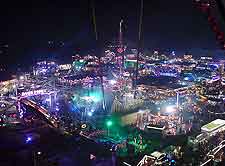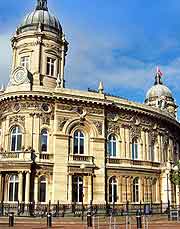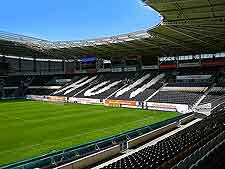Hull History Facts and Timeline
(Hull, East Riding of Yorkshire, England)

This city has a rich history that is thought to extend as far back as the Middle Ages. It grew up as a settlement at the point where the River Hull meets the River Humber.
During the centuries that followed, ships continued to transport cargo from the mouth of Hull up river to the English towns of Beverley,
Nottingham and
York and across the North Sea to Northern Europe.
Medieval Hull
From the 13th century on, Hull became a strategic port for royal military campaigns. King Edward I used the port as a base for his Scottish campaigns. In 1299, he founded the borough of Kingston-upon-Hull, which is still the formal title used today. Hull also benefited from trade in all manner of goods in medieval times. Through the port came imported Dutch cloth, Swedish iron ore and Scandinavian timber. Some merchants who lived in the town, such as the De La Pole family, grew very wealthy as a result.
Hull in the 17th Century
Although the 17th century did bring about a decline in trade, the town retained its strategic military importance. Hence, during the English Civil War, it saw a great deal of activity. In April 1642, King Charles I tried to gain control of Hull's arsenal. Turned away by local Parliamentarian supporters, the King later laid siege to the city.

Hull in the 18th and 19th Century
From the 18th century onwards, Hull's development really picked up pace. In 1778, the first of many docks was built. Hull also quickly outgrew its old medieval boundaries, with suburbs springing up on the town's eastern and western edges. Many industries grew up at this time and a burgeoning fishing industry was also evident. By 1840, almost half of Britain's whaling vessels set off from Hull. The discovery of fish-rich parts of the North Sea also tempted many fishermen from southern England to move northwards.
One of the town's most prominent figures at this time in history was William Wilberforce. Born in Hull in 1759, he campaigned tirelessly as a Member of Parliament, contributing to the eventual abolition of the slave trade in 1833.
In 1840, the railway arrived in Hull, linking it with that other great northern city of
Leeds. Other rail links followed and the improved communications did much to help boost trade and industry, fuelling prosperity. Along with wealth came a certain sense of pride. Hull was granted city status in 1897. Major civic buildings were erected at this time, including the Guildhall, started in 1904.

Modern Hull
The beginning of a new century brought general industrial decline to Hull, along with signs of a failing fishing industry. Nevertheless, urban improvements did continue during this period, including the founding of Hull University in 1927. The poet Philip Larkin was to serve as the university's librarian in the 1950s.
During the Second World War, the city's strategic importance made it a target for air raids. Early 1941 brought a great deal of destruction. Consequently, Hull's post-war years were taken up with reconstruction. Instrumental in this enormous project was Edwin Lutyens, who drew up a detailed plan that ended up taking years to complete. Although many small docks had to close, in 1969 the Queen Elizabeth Dock was opened to deal with the growth of container traffic. In 1973, long-standing plans to build a suspension bridge across the River Humber were also put into action and the bridge was formally opened in July 1981.
 This city has a rich history that is thought to extend as far back as the Middle Ages. It grew up as a settlement at the point where the River Hull meets the River Humber.
This city has a rich history that is thought to extend as far back as the Middle Ages. It grew up as a settlement at the point where the River Hull meets the River Humber.
